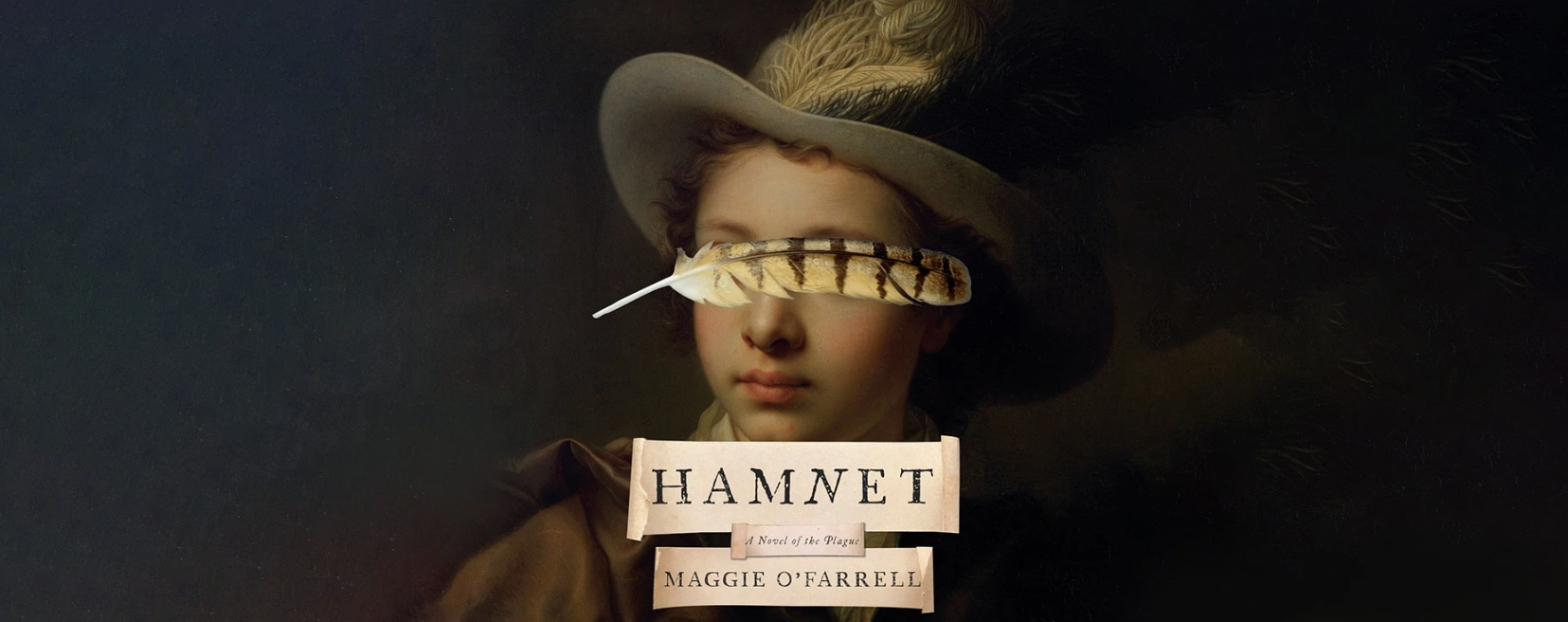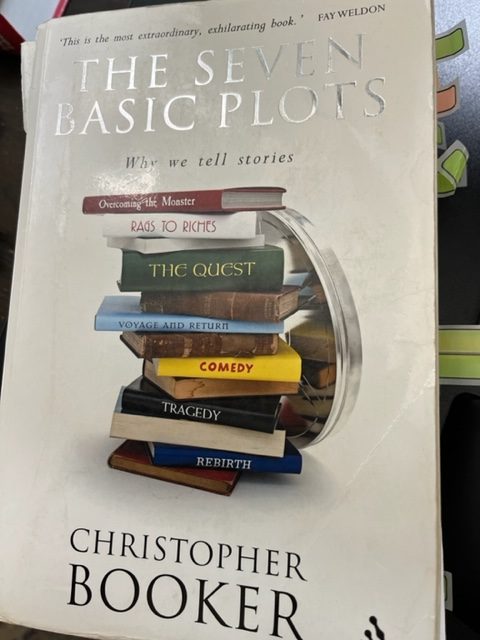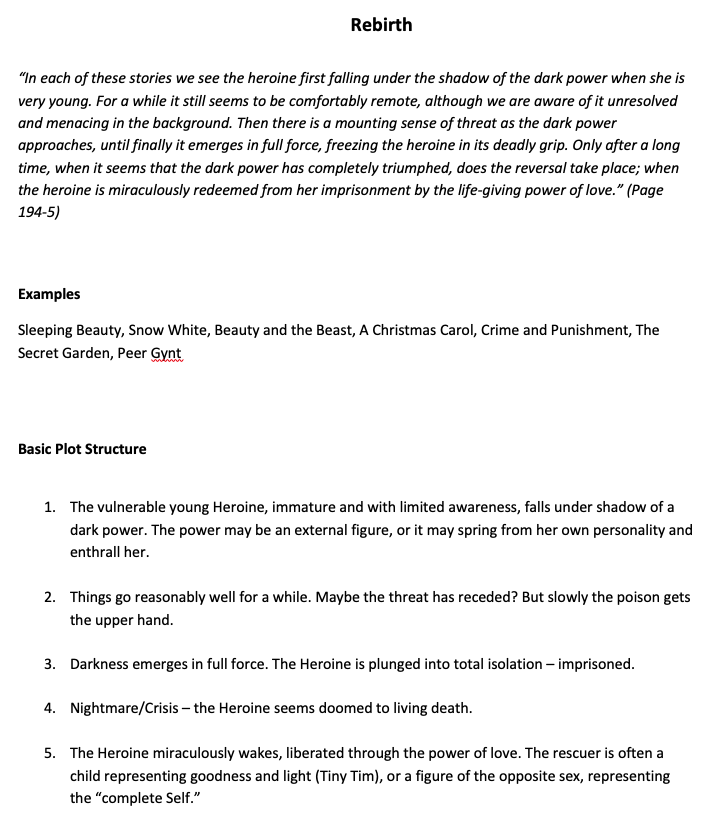How can a student of creative writing search for and find plot in a book?

This excellent novel, one of the best I have enjoyed since Shipping News by Annie Proulx and Prayer for Owen Meany by John Irving, was recommended for study this year by Jean in SIII. Jean is a historical novelist in the thick of research and writing her novel from the time of the revolutionary war, and she has an innate sense of good writing! At first, I was hesitant to read a book titled “A novel of the plague,” as my vision was of bodies piled up and death at every corner. But, as is often the case, subtitles are sometimes more a reflection of a trend than content, so I set aside my concerns and dove in. Yes…there is a bit of “plague” in this story, but it’s more about a woman’s struggle to save a child. It is also a study of a marriage, and a unique one.
As usual, I heartily suggest you read Hamnet, for the joy of the read but also to form your own opinions. But before I go another step forward. If you are reading this post, then I offer a spoiler alert!
Another warning, of sorts: I want to be clear that what I have to say about Hamnet is my opinion. I’m not a literary scholar, and I’m not the literary police. I am a writing teacher and a writer who has put in about a decade of analysis of story, literary devices, and so on, but again…I’m not going to call myself an expert. I also believe that creative writing is far too subjective for absolutes and that a counterargument can be made for every point made about any book.
Finally, in any conversation about plot here at the Studio, I lean into Christopher Booker’s The Seven Basic Plots. Booker is not the only thinker out there analyzing plot, but he is the most interesting one (to me) as he is also looking at story as a source of evolution and specifically the evolution of consciousness.
 The first question to ask before figuring out a plot is “Who is the protagonist?”
The first question to ask before figuring out a plot is “Who is the protagonist?”
In two Studios there was a consensus: Anges. No questions asked. But in one studio, Hamnet (the son of Shakespeare) and Shakespeare were debated.
The first, Hamnet, was easy to set aside because though his actions of putting himself (or intending to put himself) in the way of death and thus saving his sister was heroic (or deluded…depending on the POV), we cannot be sure that his choice resulted in his sister living, in the end. It could be argued that Hamnet died, and was going to die, because of his exposure and lack of early treatment, whereas his sister was already going to live, as she had been aggressively treated early enough)…there is no full character arc to chart here. Hamnet doesn’t start out wanting to live more than anything in this world and then accepts death after a series of trials and tribulations at the end of the book. He is a boy worried for his sister, searching for an adult to help her, and then he is a boy who, quite sick himself, puts himself in her place. That’s a subplot. But his presence in the book must be more complex to carry the novel’s whole.
This is common. The person who does the impossible thing, or the bold thing, is often confused as the protagonist, but I love Booker because he provides us with a map through the whole of the book to test and see if there is change. A heroic action isn’t enough—transformation (or a lack thereof, is what were after).
This brings me to Shakespeare-as-potential-hero. It was argued that Shakespeare was the hero because, well…he was Shakespeare, the greatest living writer of our time and so famous there could be no other role for him to play but that of the hero. It was also argued that in an interview Ms. O’Farrell gave (I’m sorry, I don’t know which interview), she revealed that likes to hide her protagonists from the reader. The hiding of this particular protagonist (Shakespeare) happened by withholding his name (he was called the son, the tutor, or the husband). Finally, it was argued that he was heroic because he wrote a play titled Hamlet, which became very famous and thus translated his grief over the loss of his son into transformative art.
Hmmm…I hadn’t imagined that someone’s fame and an author interview were factors in plot study or character development. Instead, I like to lean into the content of a book and see, in the chapters, trackable evolution. To lean into fame and media as criteria for plot would make it nearly impossible for you, the writer of a story, to learn and apply plot to your creations because there would be so much left to chance and interpretation, which is why I use Booker as a source for discussions of plot. His thirty-year study of story, which is broken down methodically and explained, provides a usable map for writers. With Booker as a reference, a writer can see exactly what needs to happen in a given story, and there are examples as well. In recently finishing a book, I discovered my own plot in the sixth (of seven) drafts, based on Booker’s model of the plots. Had I not had them, had I leaned into fame or author interviews for my understanding, I would have been utterly lost.
So…okay. That may work for some readers. And that’s fine. The best thing in this situation is to agree to disagree and continue forward, to looking at another reason Shakespeare could be the hero, which is because he wrote Hamlet. This is a trackable plot possibility, and we might find him the hero if he was a man who had no idea what to do with his grief, had never known what to do with it, and thus…after many trials and tribulations…arrived painstakingly at the decision to write a play that assuaged his grief and took the world by storm. But, in a chapter-by-chapter analysis of this book, that’s different from what happened. Shakespeare is hardly in the story, and most of what happens to him is in the form of flashbacks.
If you are looking for a novel about William Shakespeare, this isn’t it; the Bard only appears in flashbacks. The action mainly concerns his wife and children. While Will was living and working in London for most of the year, his family lived in Stratford Upon Avon, along with the playwright’s mother and father. The novel follows the characters across two times: 1582, when Shakespeare and his wife first met, courted, and married, and around 1595, during an outbreak of plague that would (Spoiler Alert) eventually claim the life of Shakespeare’s son, Hamnet. ~ The Shakespearean Student, 7/13/21
Who is the hero of Hamnet, and What is the Plot of This Book?
It was in this same Studio, where we spent a good amount of time debating who the hero was as well as inventing new and interesting criteria for analyzing the plot, that a student (Don) finally proved that the hero was Agnes and the plot was Rebirth. And he did so brilliantly and on-point by mapping throughout the chapters and cross-checking with the plot outline itself.

Anges, in this book, is shown to be someone struggling with a dark power from the beginning, which is her own power of mystical sight and knowledge. She learned her powers from her mother, at a very young age, but then her mother dies and Agnes, displaced by an evil stepmother, becomes rather enthralled by her powers in that she uses them to express some control in a life that is utterly out of her control.
“She grows up feeling wrong, out of place, too dark, too tall, too unruly, too opinionated, too silent, too strange. She grows up with the awareness that she is merely tolerated, an irritant, useless, that she does not deserve love, that she will need to change herself substantially, crush herself down if she is to be married.” ― Hamnet
Things do seem to go reasonably well for a while. Agnes seems to be managing her powers and her confidence, both of which work to get her out of her home (and out from under the control of her vicious stepmother) in that she seduces Shakespeare, gets pregnant, marries him (despite how he is too young) and moves into his home to begin a freer life. Only the poison (her over-confidence) gets the upper hand. Her sight isn’t developed well enough to be reliable, she doesn’t listen to the signs or misinterprets them, and makes big mistakes. She arranges for her husband to go to London to pursue his desire to escape his abusive father but in doing so has isolated herself more and more, and then…when she has a feeling of doom approaching, she ignores it. Even the bees leaving the hive tell her “something is wrong” but she doesn’t pay attention.
Then, once home and seeing her daughter is sick with the plague, Agnes suffers from tunnel vision. She doesn’t realize her son has been exposed, too, and needs care, until it’s too late. She has taken for granted that he is strong and will live. But Hamnet dies, the daughter lives, and now Agnes is fully lost to the darkness of her mistakes; she doesn’t know what she believes anymore. She is riddled with doubt and grief. And her husband is cheating on her, as well.
While Agnes’ husband’s career flourishes in London and he is becoming more and more wealthy, she continues to travel in the land of death, lost to her surviving children and unsure of herself. She is in the darkest place imaginable. Going through the motions of crafting a life, she is brought down by the oldest enemy of them all, the vicious stepmother who reveals that Hamlet has been written.
Now her quest as the hero begins. Angry and ready to confront her husband, Agnes leaves her small village to take a long and challenging journey to London and face her husband. Then, in watching what he has done with the play—the way he has captured their son for all eternity within the fabric of his writing is she finally freed from her darkness and desolation.
In the end of this particular plot, it is either a figure of the opposite sex (the complete self) or a child that helps a hero awaken, and it could be argued that it is both her husband and her son (as portrayed in the play) who awaken Agnes at last. She is freed, transformed, and made whole.
This movement of Agnes’ character is trackable on the page and found in the chapters. There is no guesswork in finding this plot and you can tick off each of the five parts of the structure. And that, in the end, is how I offer plot as a study device. In this way, you, the writer, can look into the book and see this evolution, too. You can track it, and most of all, you can be thinking about your own story now. For from example, we learn, and with Hamnet as an example, you see the Rebirth plot in action. Is your work is going that same distance? If not…what can you do to help it along?

